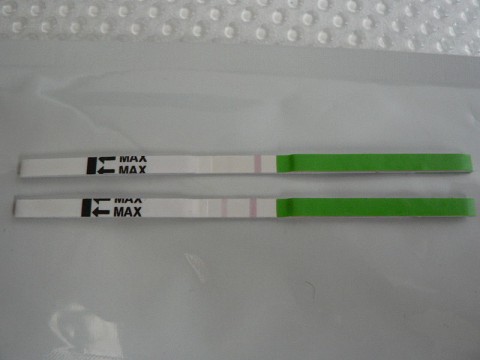Ovulation and You
Ovulation occurs when an egg is released from an ovary and is the most fertile time of the month for a woman. Tools used to detect ovulation can help you determine the best times of the month to try to conceive. Some women may use ovulation tools in combination with fertility awareness, charting or Natural Family Planning to determine when they are ovulating. Women who suffer from fertility problems may continue having menstrual cycles without experiencing ovulation. These kits will be useful in helping a woman determine if she is ovulating at all. Read through the full manufacturer directions before using a test kit.

Ovulation Prediction Kits (OPK’s)
Kits that predict ovulation work by detecting a surge in the luteinizing hormone (LH) in your urine. LH increases one to two days before ovulation. When the hormone surges, an egg is released from the ovaries and marks the most fertile time of a menstrual cycle.
Before taking the test, determine the best time of the month to start. Count backwards about 15 days from the start of your last cycle; this is the time of the month you want to start testing. With one type of kit you will place a test strip into a container of urine, the other is meant to be placed in a stream of urine. While first morning urine is not necessary, you should avoid urinating or drinking frequently four hours prior to taking the test. Results from the test are usually readable after five minutes. How to read the results varies depending upon the type of OPK you are using. If a surge in the luteinizing hormone is detected, you will ovulate within 24 to 48 hours.
Digital: A smiley face appears to signify ovulation or a “Yes” or “No” will appear.
Disposable: If the test line appears darker in color or similar in color to the control line, ovulation will occur within two days.
Saliva Fertility Monitor
A saliva fertility monitor works by detecting changes in the electrolytes of saliva. To use this type of monitor, place a drop of saliva on the lens or slide. Wait approximately five minutes, then place the slide under the microscope. Turn on the LED light and view the sample. If a crystal-like pattern is noticed, it means you are about to ovulate, or you are currently ovulating. If the sample appears as thin lines or dots, you are not ovulating. This device can be used daily to predict ovulation, and should be used first thing in the morning, before brushing your teeth, eating or drinking.
Fertility Monitors
A fertility monitor, such as the one by Clear Blue Easy, tracks your monthly cycles and lets you know when to test and what days you are most fertile. To start using this device, push the “m” button on the first day of your menstrual cycle. The monitor will notify you when to take a test. When a test is requested, place the test stick into a flow of urine (use first morning urine) for three seconds. After this, you can place the test stick into the slot on the monitor. After approximately five minutes, the monitor will display the results. One bar signifies low fertility; two bars signify high fertility; and three bars signify peak fertility (ovulation).